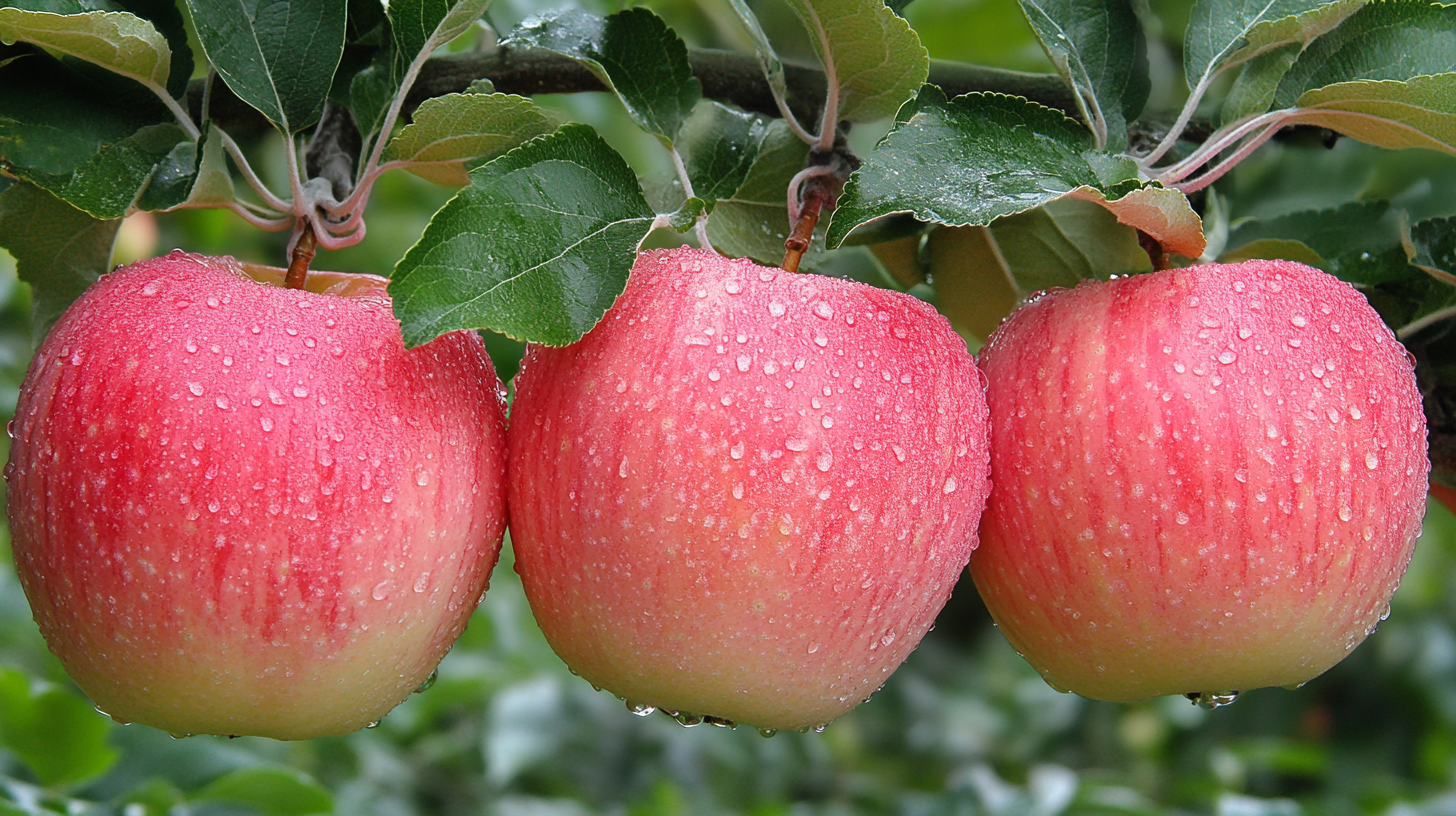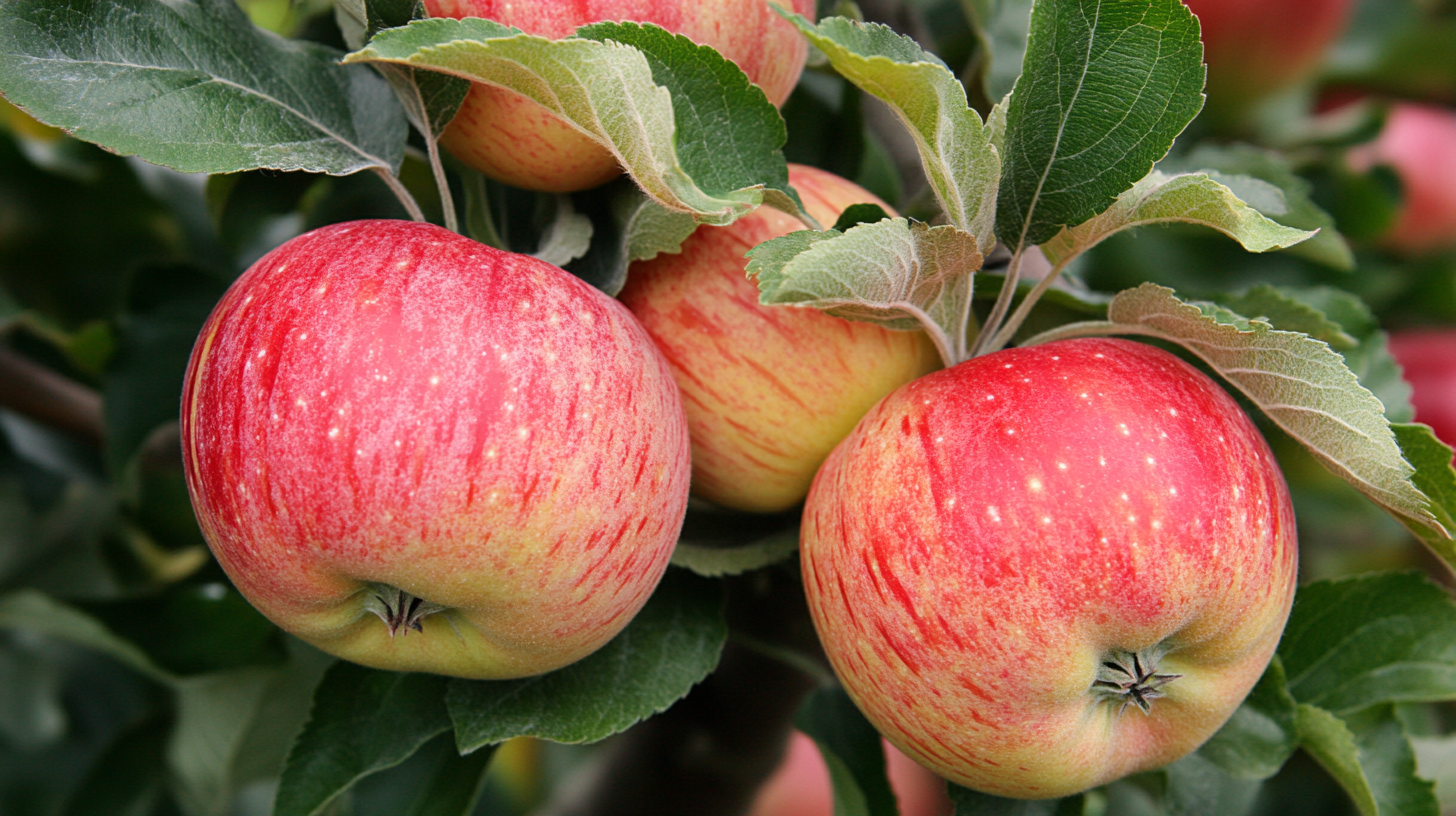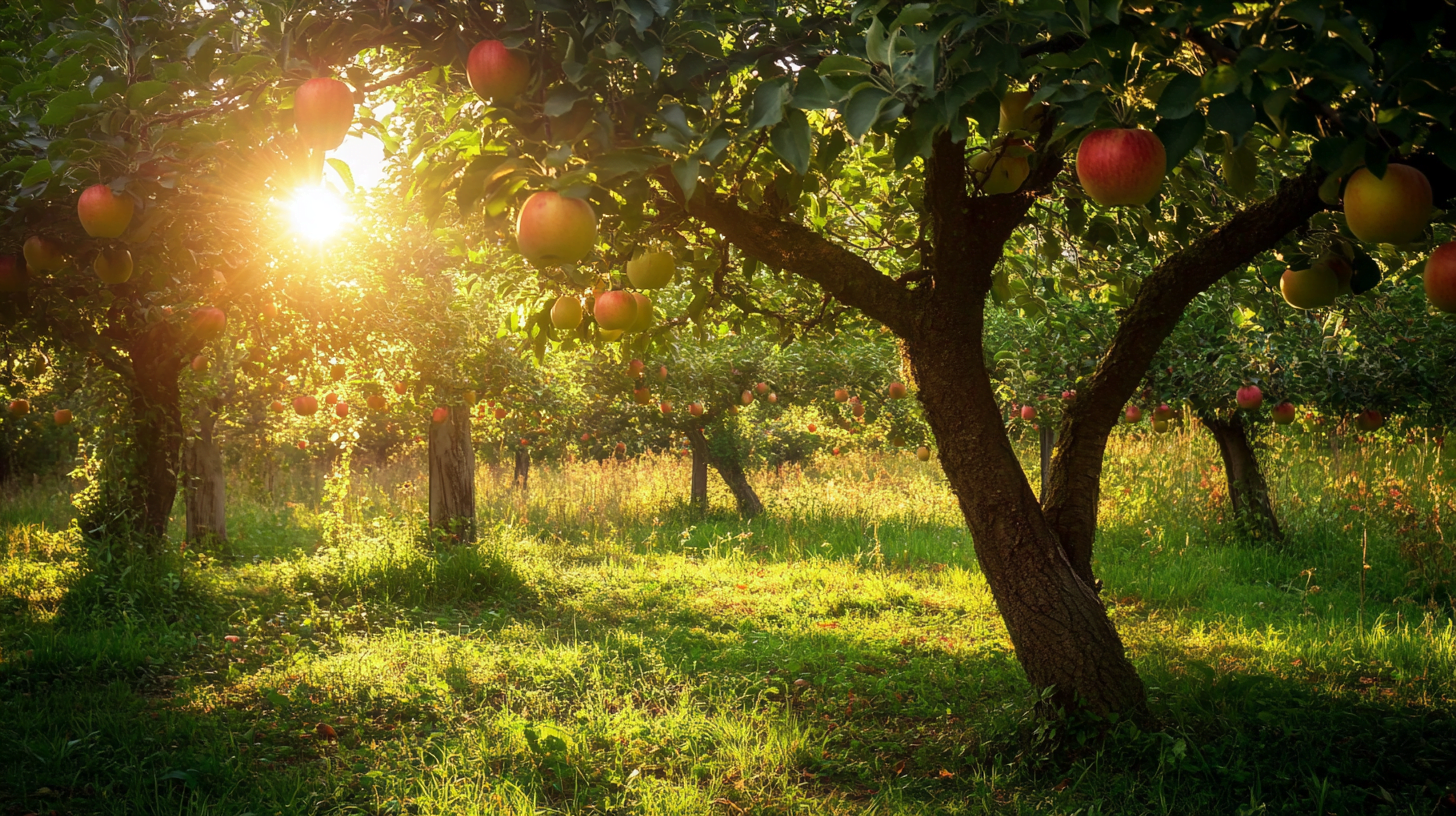Beautiful Plants For Your Interior
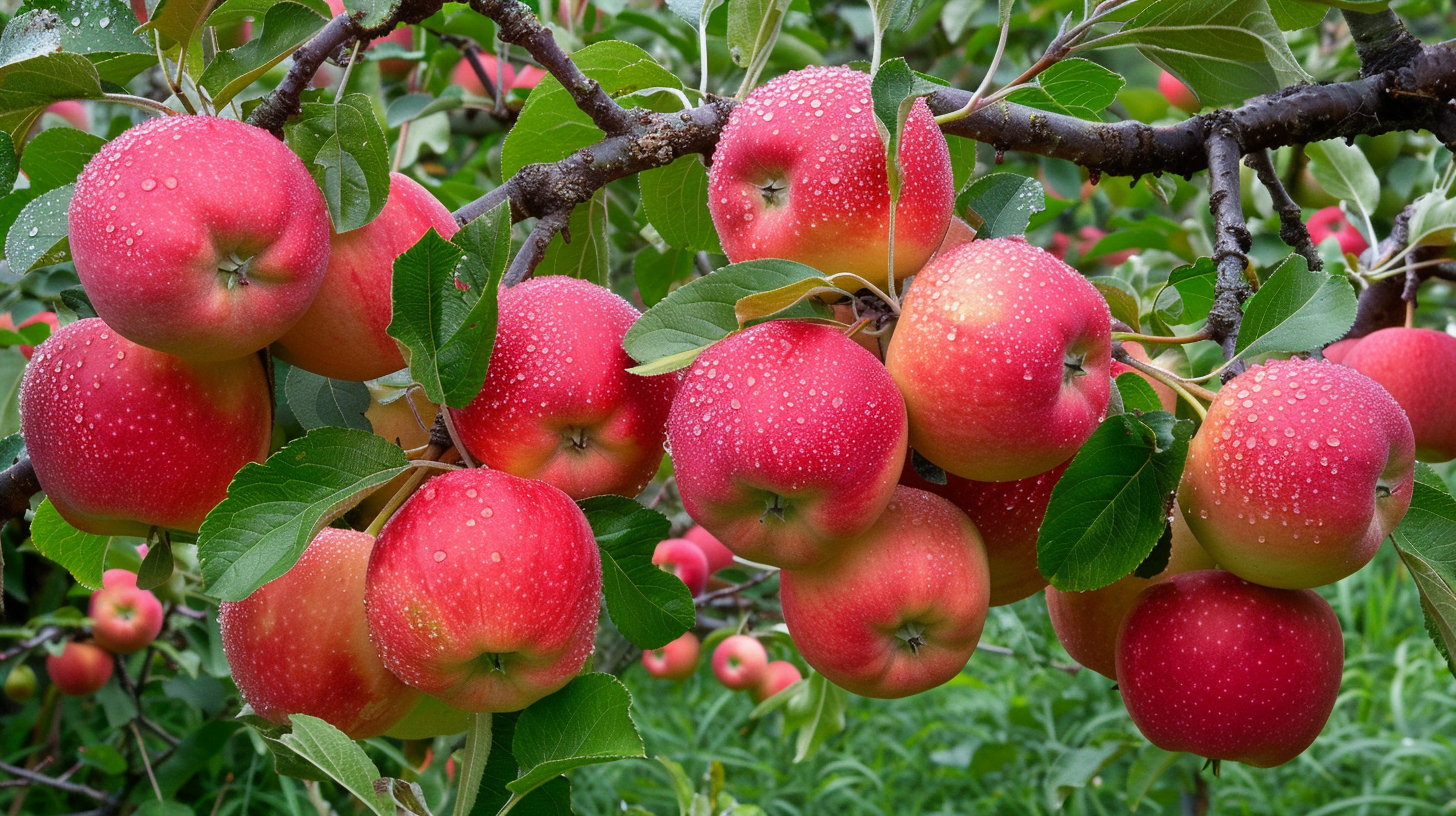
Table of Contents
Understanding Apple Tree Lifespan
The longevity of an apple tree is a critical factor for any home gardener or orchardist. The lifespan of an apple tree can vary greatly depending on whether it is a standard or dwarf variety. In this section, we will delve into the expected lifespans of both standard apple trees and dwarf apple trees, shedding light on their respective long-term viabilities.
Lifespan of Standard Apple Trees
Standard-sized apple trees, grown on standard rootstock, are known for their impressive longevity. These trees, on average, can continue to thrive for about 100 years, sometimes even surpassing this milestone. The enduring nature of standard apple trees allows them to be a part of one’s garden or orchard for multiple generations, providing a continuous yield of fruit over the decades.
Standard apple trees’ resilience is attributed to their robust root systems and larger overall size, which contribute to their ability to withstand various environmental challenges. They are typically more resistant to disease and adverse conditions compared to their smaller counterparts.
For a deeper understanding of the different apple tree varieties, including those that are standard-sized and known for their longevity, you can explore our dedicated section on the subject.
Lifespan of Dwarf Apple Trees
Dwarf apple trees, while offering several practical advantages for home gardeners, have a significantly shorter lifespan in comparison to standard apple trees. These diminutive trees usually have an expected life span of about 20 years. It’s not uncommon for dwarf apple trees to need replacement earlier due to factors such as disease, poor health, or declining production.
The reduced lifespan of dwarf apple trees can be a consideration for those planning their garden or orchard for long-term fruit production. While they may not endure as long as standard trees, dwarf apple trees provide quicker fruit production, which can be especially appealing for those looking to enjoy the fruits of their labor without a lengthy wait.
To ensure the health and longevity of your dwarf apple trees, proper care is essential. This includes practices such as pruning apple trees to promote good health and productivity. If you’re considering planting dwarf apple trees, you might find our guide on how to plant apple trees useful for getting started.
| Apple Tree Type | Average Lifespan |
|---|---|
| Standard Apple Trees | ~100 years |
| Dwarf Apple Trees | ~20 years |
Understanding the lifespan of your apple trees, whether they are standard or dwarf varieties, is crucial for planning and maintaining a successful orchard. Both types of trees can offer joy and fruit for years, but the choice between them may come down to your long-term goals and the amount of space available. Regardless of their size, the apple tree blossoms and fruit they produce are a delight to many gardeners.
Apple Tree Productivity
The productivity of apple trees is a vital factor for both commercial growers and home gardeners. The yield of an apple tree is influenced not just by the care it receives, but also by its genetic makeup and the rootstock on which it is grafted.
Fruit Production in Standard Trees
Standard-sized apple trees, known for their longevity, can live for about 100 years or more. These trees are typically grafted onto standard rootstock, which allows them to grow to their full genetic potential in terms of size and lifespan. When it comes to fruit production, standard apple trees have a higher yield in terms of the total amount of fruit produced in the same amount of space compared to dwarf apple trees. This is partly because full-sized apple trees tend to produce more weight in wood and twigs, thus diverting energy that could have been used for fruit production (Growing Fruit).
| Tree Type | Expected Lifespan | Fruit Yield |
|---|---|---|
| Standard Apple Trees | ~100 years | High (Total Weight) |
Despite their larger size and higher total yield, standard apple trees require more space and time to reach maturity and full fruit production.
Fruit Production in Dwarf Trees
Dwarf apple trees, on the other hand, are preferred in commercial cultivation for their early fruit production and higher yield per acre. These trees, due to their dwarfing rootstock, are more compact and reach fruit-bearing age quicker than their standard counterparts. While a dwarf apple tree’s lifespan is significantly shorter, typically around 20 years, they offer several advantages, including more uniform fruit quality and lower labor costs due to their smaller size and easier manageability (Growing Fruit).
In intensively managed commercial cultivation, high-density dwarf apple trees outperform standard apple trees in yield per hectare. They also pay out establishment and growing costs sooner, which is an important consideration for commercial growers.
| Tree Type | Expected Lifespan | Fruit Yield (Per Hectare) | Establishment Cost Recovery |
|---|---|---|---|
| Dwarf Apple Trees | ~20 years | High | Faster |
For home gardeners, dwarf apple trees offer the opportunity to grow multiple apple tree varieties in a limited space, increasing the variety of fruit while maintaining ease of pruning and harvesting. Learning how to plant apple trees correctly and understanding the requirements for apple tree blossoms can further enhance the productivity of these diminutive yet bountiful trees.
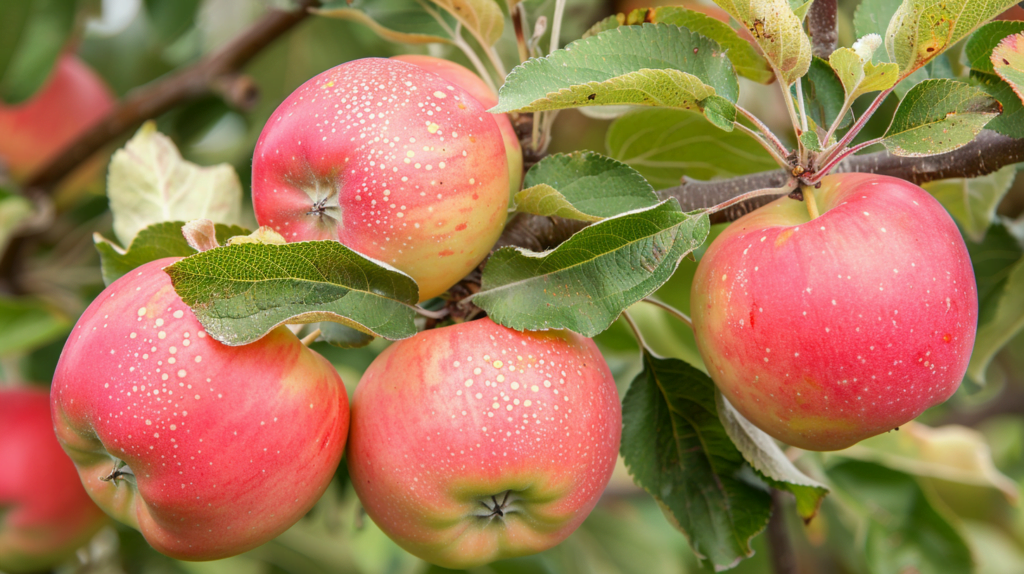
Advantages of Dwarf Apple Trees
Dwarf apple trees offer several advantages that make them an appealing choice for home gardeners and commercial orchards alike. These advantages include space efficiency, early fruit production, and specific maintenance requirements.
Space Efficiency
Dwarf apple trees are known for their compact growth, which makes them ideal for smaller spaces. Unlike their standard-sized counterparts, dwarf trees take up less room, allowing for more trees to be planted in a given area. This is particularly beneficial for those with limited garden space who still wish to enjoy a variety of apple tree varieties. Additionally, the reduced canopy spread of dwarf trees simplifies the task of harvesting, as most of the fruit can be picked from the ground or with minimal use of ladders.
Early Fruit Production
One of the most significant advantages of dwarf apple trees is their ability to bear fruit at an earlier stage. While standard apple trees may take several years to reach maturity and produce fruit, dwarf trees can begin yielding fruit within a year or two after planting (The Prairie Homestead). This early production allows for quicker enjoyment of the fruits and a faster return on investment for commercial growers.
Maintenance Requirements
Dwarf apple trees have limited root systems and a compact growth habit, which generally requires less pruning compared to standard-sized fruit trees. However, they do require more maintenance in other areas. For example, dwarf trees have shallow root systems that need constant irrigation and may not survive in colder climates without cold resistance. Additionally, they may require staking to support their growth and fruit-bearing branches.
| Consideration | Dwarf Apple Trees | Standard Apple Trees |
|---|---|---|
| Space Required | Less | More |
| Early Fruit Production | Within 1-2 years | Several years |
| Pruning | Less frequent | More frequent |
| Lifespan | About 20 years | Approximately 100 years |
| Cold Resistance | Lower | Higher |
Despite the maintenance considerations, dwarf apple trees remain a popular choice for their numerous benefits, including the ease of care and the option to cultivate them in containers. Furthermore, their compact size and early fruiting make them an attractive option for those looking to maximize fruit production in a small space. For more information on how to grow and care for these trees, explore our guides on how to plant apple trees and enjoy the beautiful apple tree blossoms that herald the beginning of the growing season.
Types of Dwarf Apple Trees
Dwarf apple trees, an appealing option for mid-age homeowners with limited space, offer the joy of fruit cultivation without the expansive reach of standard trees. Understanding the rootstocks and varieties of these diminutive trees is crucial for successful growth and fruit production.
Rootstocks for Dwarf Trees
Dwarf fruit trees are created through grafting—a technique where a scion from the desired plant cultivar is joined onto a rootstock of another plant. The rootstock determines the size of the tree, with specific types engineered to limit the growth of the tree to a manageable size. This compact growth habit and limited root system require less pruning compared to larger fruit trees, making them suitable for more confined spaces and easier maintenance (Southern Living).
| Rootstock | Size Classification | Approximate Tree Height |
|---|---|---|
| M27 | Extreme Dwarf | Under 6 feet |
| M9 | Dwarf | 6-8 feet |
| M26 | Semi-Dwarf | 8-12 feet |
The above rootstocks are commonly used for dwarf apple trees, each providing a different size constraint and suitability for various garden spaces. Note that while dwarf apple trees are generally easier to manage, their limited root systems make them less anchorage-stable, often necessitating staking, especially during the early years of growth (Gardener’s Path).
Popular Dwarf Apple Varieties
While most dwarf apple trees are propagated using grafted rootstock and won’t grow true from seed, there are a few “true” dwarf trees that have been bred to maintain their petite stature (Gardener’s Path). Here are some popular dwarf apple varieties that are cherished for their flavor, manageable size, and ornamental qualities:
| Variety | Flavor Profile | Color | Harvest Season |
|---|---|---|---|
| Honeycrisp | Sweet and Tart | Red and Green | Early Fall |
| Gala | Sweet and Aromatic | Red and Yellow | Late Summer |
| Fuji | Sweet and Crisp | Red and Green | Late Fall |
| Granny Smith | Tart and Crunchy | Bright Green | Late Fall |
These dwarf apple varieties offer a range of flavors and harvest times for the home gardener, making it possible to enjoy fresh apples throughout the season. When selecting a variety, it’s important to consider your personal taste preferences, local climate, and the specific pollination requirements for fruit production. To explore more options, visit our list of apple tree varieties.
Incorporating dwarf apple trees into your garden not only maximizes space but also brings the possibility of enjoying home-grown apples. With the right selection of rootstock and variety, paired with appropriate sunlight and soil requirements, and understanding of chill hours and pollination, you can cultivate a fruitful and enchanting mini orchard.
Growing Dwarf Apple Trees
Cultivating dwarf apple trees can be a rewarding experience for mid-age homeowners looking to maximize their garden’s potential. Understanding the specific needs of these compact fruit trees is essential for yielding a bountiful harvest.
Sunlight and Soil Requirements
For optimal growth, dwarf fruit trees require full sun during the growing season. A minimum of six hours of direct sunlight each day is crucial (Southern Living). This exposure ensures the trees have enough energy for fruit production and overall health.
The soil should be well-drained and have a pH that is acidic or neutral. Loam or sandy loam soils are ideal because of their ability to retain moisture without becoming waterlogged. If you’re dealing with heavy clay soil, consider elevating the planting area with a mound or berm to improve drainage.
| Requirement | Specification |
|---|---|
| Sunlight | Minimum 6 hours of direct sunlight daily |
| Soil Type | Well-drained loam or sandy loam |
| Soil pH | Acidic to neutral |
Planting and Staking
When planting dwarf apple trees, it’s important to remember that they often do not grow true from seed due to their propagation via grafted rootstock. For detailed guidance on planting these trees, refer to how to plant apple trees.
Most dwarf apple trees will require staking to support them, especially when laden with fruit (Gardener’s Path). Staking helps maintain the tree’s structure and prevents damage from the weight of growing apples or adverse weather conditions.
| Action | Details |
|---|---|
| Planting | Use grafted trees; follow specific planting instructions |
| Staking | Necessary to support tree structure |
Chill Hours and Pollination
Each dwarf apple tree variety has a specific chill hour requirement to ensure successful fruit production. Chill hours refer to the cumulative time during which temperatures are below 45 degrees Fahrenheit but above freezing. This period of cold is necessary for the tree to break dormancy and stimulate flowering and fruit set in the spring.
Pollination is also a critical factor for fruit production. Most apple trees are not self-pollinating, so planting different apple tree varieties that bloom at the same time can increase cross-pollination and, consequently, fruit yield. Additionally, attracting pollinators such as bees with apple tree blossoms can further enhance pollination success.
| Factor | Importance |
|---|---|
| Chill Hours | Required for breaking dormancy and promoting flowering |
| Pollination | Necessary for fruit set; cross-pollination encouraged |
By meeting the sunlight and soil requirements, planting and staking appropriately, and ensuring adequate chill hours and pollination, you can foster the growth of dwarf apple trees in your garden. With proper care and maintenance, including pruning apple trees, your dwarf apple trees can thrive, allowing you to enjoy the fruits of your labor in a relatively compact space.
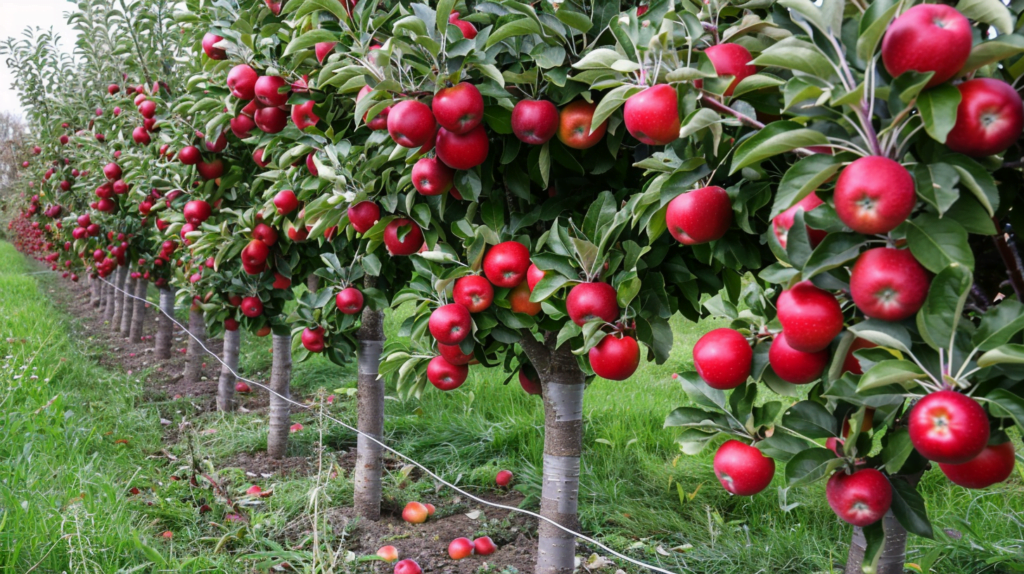
Comparing Dwarf and Standard Apple Trees
Both dwarf and standard apple trees have their unique characteristics and benefits. Understanding the differences between these can help home gardeners make informed decisions about which type suits their space and gardening goals.
Size and Growth Habits
Dwarf apple trees are significantly smaller compared to their standard counterparts. This size difference greatly influences their growth habits and the space they require.
| Tree Type | Height | Width |
|---|---|---|
| Dwarf Apple Trees | 8-10 feet | 8-10 feet |
| Standard Apple Trees | 20-30 feet | 20-30 feet |
Dwarf apple trees are ideal for smaller gardens, as they take up less space and can even be grown in containers. Their compact size also simplifies tasks like pruning apple trees and harvesting, as most of the tree can be reached from the ground or with minimal assistance from ladders.
Lifespan and Fruit Yield
In terms of lifespan and fruit yield, there are notable differences between dwarf and standard apple trees.
| Tree Type | Lifespan | Productive Years | Yearly Fruit Yield |
|---|---|---|---|
| Dwarf Apple Trees | Up to 20 years | 10-15 years | Less than Standard |
| Standard Apple Trees | Up to 100 years | 20-50 years | More than Dwarf |
Standard-sized apple trees on standard rootstock can live for about 100 years, sometimes even more, while dwarf apple trees have a maximum life expectancy of about 20 years (Permies; Growing Fruit). Standard trees have a longer productive life, providing fruit for multiple generations, whereas dwarf trees typically need replacement sooner due to various factors such as disease or low production (Hardy Fruit Trees).
Considerations for Home Gardeners
When deciding between dwarf and standard apple trees, home gardeners should consider several factors:
- Space Availability: Dwarf trees are suitable for small spaces or as part of an edible landscape.
- Fruit Production Needs: If high fruit yield is the goal, standard trees might be more suitable, but they require more time to reach full production.
- Maintenance: Dwarf trees are easier to maintain due to their size, making them a good choice for those with limited time or physical ability.
- Lifespan: For a long-term investment, standard trees are preferable. Dwarf trees offer a quicker return on investment with earlier fruit production.
- Planting and Care: Dwarf trees often require staking and may have specific soil and sunlight requirements. Information on how to plant apple trees can guide gardeners through the process.
- Aesthetic Preferences: Some gardeners may prefer the look of full-sized apple trees with their apple tree blossoms and larger canopy.
When selecting an apple tree, it is essential to explore the different apple tree varieties available in both dwarf and standard sizes to find the best fit for your garden’s conditions and your personal preferences.
